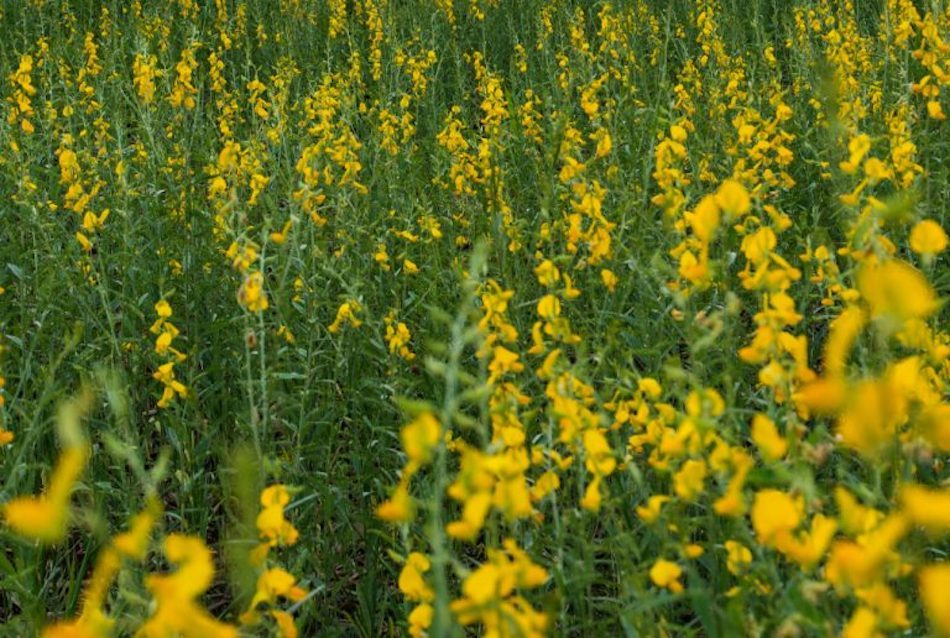Penn State Extension provides a list below of potential cover crop options to consider this summer.
Sudangrass
Sudangrass is a standard summer cover. Seeded at 30-50 pounds per acre, it tolerates heat and produces large amounts of organic matter (8,000-10,000 pounds per acre of dry matter). It needs warm soil to germinate and so it is usually planted between June and August. After six to eight weeks, you will likely want to mow it (18-30 inches tall). This will keep it from becoming too woody. Mowing will also cause a flush of food for soil organisms as roots temporarily die back. Some varieties have been show to suppress root-knot nematode and soil-borne pathogens when green material is mowed and quickly disked into the ground (Trudan 8 sudangrass, Sordan 79, SS-222, SS-333 sorghum sudangrass hybrids among others).
If you plan to try to use sudangrass or others below as a biofumigant, make sure you know the details to make this effective. However, there are disadvantages. Large amounts of plant material, which are good for building soil and suppressing weeds, can be difficult to integrate into the soil or cut through with a no-till drill. Another disadvantage is that sudangrass can produce toxic levels of hydrogen cyanide and nitrate when young, drought stressed or just after a frost. Do not graze at these times.
Pearl Millet
Pearl millet is much less commonly used as a summer cover, but one I think has good potential. Two years ago we planted it on a farm in Southeast Pennsylvania on July 21st at 11 pounds per acre and got good growth. It dealt with severe drought and heat. It is also a warm season grass, so wait for the soil to reach 65-70 F before you plant. The target seeding rate is 10 to 15 pounds per acre drilled a half inch deep. We often don't think to fertilize our cover crops. But the recommendation is to fertilize at 70% the rate of corn.
This nitrogen should be captured by the millet and released again as the residue breaks down for your next crop. It is also recommended to mow millet when it reaches two- and-a-half feet. It can reach 12 feet high if not mowed. Advantages include: potential to suppress soil-borne disease, high organic input, drought resistance and winter kill. Disadvantages include: more expensive seed and difficulty of incorporation.
Buckwheat
Buckwheat is another summer standard. It is known for quick growth that suppresses summer annual weeds and improves soil aggregation. Drill buckwheat at 50 pounds per acre (broadcast 70 pounds per acre) one inch deep. Mow or disk less than ten days after the beginning of flowering (35 days). Make sure you don't plant after using herbicides with the following active ingredients on preceding crops: atrazine, imazethapyr, halosulfuron, fomesafen.
Sun Hemp
Another interesting summer cover crop I have planted a few times is Sun Hemp. Sun Hemp (Crotalaria juncea, not related to other hemps) is a fast growing tropical legume. It will not do well in the fall. It needs heat. Advantages include: substantial biomass, the ability to fix nitrogen and potential to kill soil-borne diseases and nematodes. But the cost is generally prohibitive. Drilled at 30-40 pounds per acre with seed cost of over $6 per pound, it can be more than $200 per acre to seed. This might come down over time if they are successful in producing seed in the South. Currently most of the seed available is from Hawaii.
Other cover crops to consider for a summer window include: sunflower; Japanese millet -- very fast growth to maturity, but ability to be weedy; cowpeas; yellow sweet clover; and red clover.





Post a comment
Report Abusive Comment